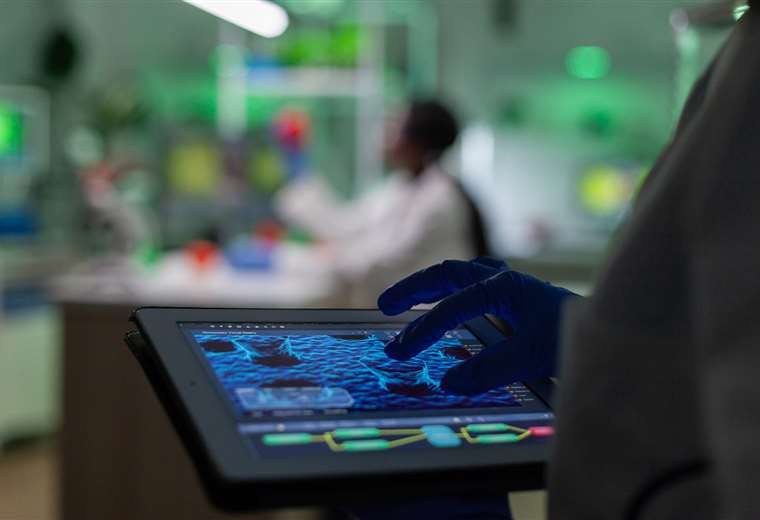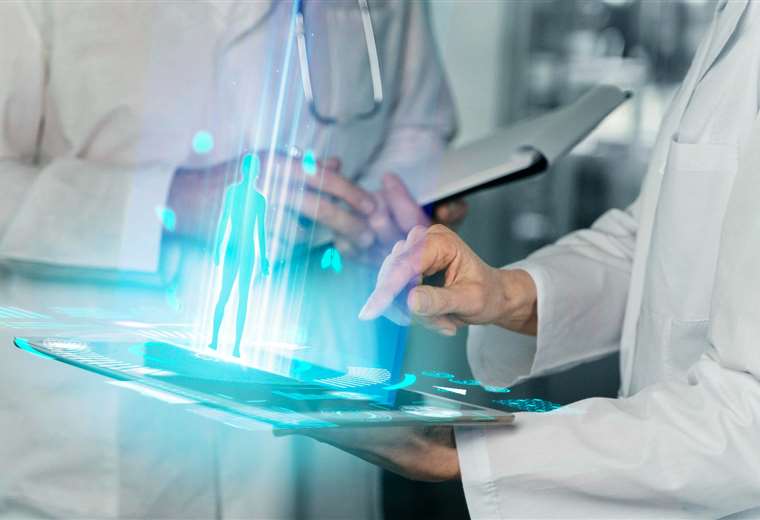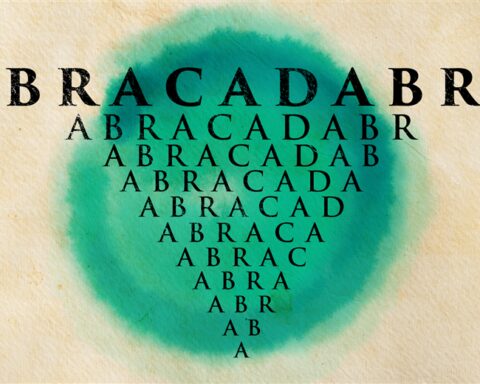March 31, 2023, 12:10 PM
March 31, 2023, 12:10 PM
Academic training, research and technological tools are combined to improve health care. Medical experts identify five trends for build a new approach to health and service supported by technology, information management and human treatment with the patient.
The context of the health emergency due to the pandemic of Covid-19 revealed serious shortcomings in the health system. The population in general and the health workers themselves, more directly, demanded an improvement.
The technology allows the patient to monitor some variables of his own health. A smart watch provides you with information about hours of sleep, stress level, caloric intake, blood pressure, oxygenation, among others.
“Mobile applications help to monitor everything that one wants in a basic way, it helps to manage the patient’s own health consciously,” says Jimmy Venegas, surgeon and academic dean of the Franz Tamayo University, Unifranz.
The use of applications and technology in the training of medical professionals It is an essential tool in medical learning and practice. Among the most popular applications is MedScape, which allows study areas such as pharmacology to be taken towards therapeutic decision-making (treatments), with some precision and in combination of medication and dose parameter recommendations.
“Traditionally, the doctor who knew the most concepts and theories by heart was considered the best. Today, on the other hand, if I have access to this technology so that my decision-making is adequate, the risk for my patient is lower. These types of applications can improve treatment outcome of a patient,” he says.
digitization of medical information for the handling and management of data in health systems can mean a high cost for the public system, but at the same time It’s a medical trend. It allows a more precise projection in the distribution of resources that facilitates the identification of seasonal pathological trends, demand for professionals by specialty and even epidemiological patterns.
“I think that the information is absolutely necessary and the doctor has that problem, we have not been really oriented towards the decision making based on information. We must understand that trends, patterns in our laboratories, etc. they can guide us towards a better result to know if we are doing things well or badly”, affirms the academic.
These bioinformatics approaches (data collection) will represent the basis for informed decision-making that could prevent scenarios such as those experienced in 2020. For this, it is urgent to have a clinical history accessible to any doctor and guarantee a more effective distribution of data. resources in the public system.
Immediate access to information allows health workers to compare diagnoses or symptoms
Tools such as image generation and ChatGTP have heralded advances in artificial intelligence as a feed for information that generates projections from machine learning and pattern recognition.
The use of these tools facilitates the review of information in clinical cases, points out Venegas: “sometimes for complex patients you have to review several scientific articles and see which have evidence and which do not, to then discern. Artificial intelligence can facilitate this process by optimizing decision-making times”.
Another element of artificial intelligence applicable to medicine is image recognition. There are imaging software that allow the recognition of foreign bodies, tumors and other injuries from this technology.
Experts refer to precision medicine and therapeutic decision making based on data obtained through these medical imaging tools such as computed tomography, magnetic resonance imaging, positron emission tomography and X-rays, genomics and other clinical variables. .
“Some tests have been done in which artificial intelligence, for example, could detect abnormalities in imaging studies, according to parameters such as size and shape according to the characteristics of the lesions. Suggesting a preliminary diagnosis when interpreting an image”, he completes.
Digital manufacturing technologies have changed the way prostheses and implants are made in medicine. These reproduce the digital models that are generated assuming the physical characteristics of each patient and are made with biocompatible and biodegradable material such as PLLA, better known as poly-l-lactic acid.
The expert assures that in the case of a fracture of a lower limb of the body (bone), today it is easier create an immobilizer with 3D printing, custombreathable and lighter than a conventional plaster becoming a more comfortable, aesthetic and hygienic solution.
On the other hand, the manufacture of artificial organs is another great challenge for 3D printing. They assure it will be possible thanks to additive manufacturing, that is, with materials compatible with the human body. “Today we can print a 3D model of a brain for example, and the surgeon can clearly see what he is going to find and plan that surgery”, he comments.
simulation technology
Simulation technology makes mechanical patients (robotic dolls), virtual patients, anatomical simulation tables and simulation software for clinical and even surgical treatments (operations) available to students and doctors to support decision-making in different possible scenarios. “Simulation technology allows practice and reduce the margin of error for when dealing with a real person”, affirms the expert.
It is inevitable to think that technology and the digitization of daily life are not put at the service of health. These five trends suggest interdisciplinary work in favor of a significant improvement in the way of doing medicine and, above all, a more accessible management of health and well-being.









